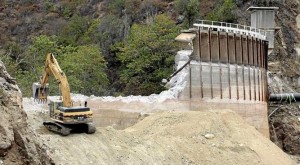On February 4, the California Public Utilities Commission’s (CPUC) Division of Water and Audits (DWA) hosted a meeting of the 16 largest CPUC-regulated water companies to discuss their current supply conditions and supply-demand management activities in response to the ongoing drought. Representatives of the Class A (> 10,000 service connections) and Class B (> 2,000 service connections) water utilities reported on current water supply conditions affecting their respective customer service areas, including a description of the supply portfolio for each service area and if water purchased from wholesale or other water agencies was subject to any present water supply cutbacks.
Also at the meeting were DWA Director Rami Kahlon; Brian Turner, Assistant to CPUC Executive Director Paul Clanon; Cliff Rechtschaffen, Senior Advisor to Governor Brown and recently appointed head of the Governor’s Drought Task Force; Tina Curry, Deputy Director of the Planning, Preparedness, and Prevention section of the Office of Emergency Services (OES); and Charles Rabamad, Assistant Director of the Recovery section of OES.
The purpose of the meeting was to assess the water companies’ supply conditions and drought management plans and provide input to CPUC staff for its preparation of a resolution, approved by the CPUC on February 27, which updates the CPUC’s existing drought management protocols (see next article).
In general, the water companies reported that they expect to weather the drought through the winter months without crisis-level supply shortages or health or public safety impacts. However, they remain concerned about the effect of the drought in the mid-term (the summer and future years if the winter remains dry) and about the importance of developing appropriate messages for customers.
Rechtschaffen exhorted the utilities to be “as nimble as possible” and explain their best management practices. He also encouraged the utilities to document their response costs in hopes of receiving federal disaster relief. The OES representatives described – in general terms – the types of emergency response programs and tools available through OES in the case of an emergency. OES encouraged the water companies to document program costs and expenses incurred when responding to drought-related conditions and to forward such documentation to OES on an ongoing basis. OES indicated it plans to use that information to: (1) determine eligibility for state or federal program funding; and (2) “make the case” to take certain protective measures in the future (e.g., seek assistance from the Federal Emergency Management Agency).
Rabamad explained that investments in new wells, storage or treatment facilities responsive to drought conditions are the types of costs most likely to be recoverable through federal disaster relief. He added, however, that loss of revenue, and to a lesser extent, additional operating expenses, are not likely to be eligible for federal funding because those costs are generally considered to be recoverable from ratepayers. However, OES stressed that those costs (whether already expended and expected to be incurred) with an arguable nexus to the protection of public health and safety would be considered.





